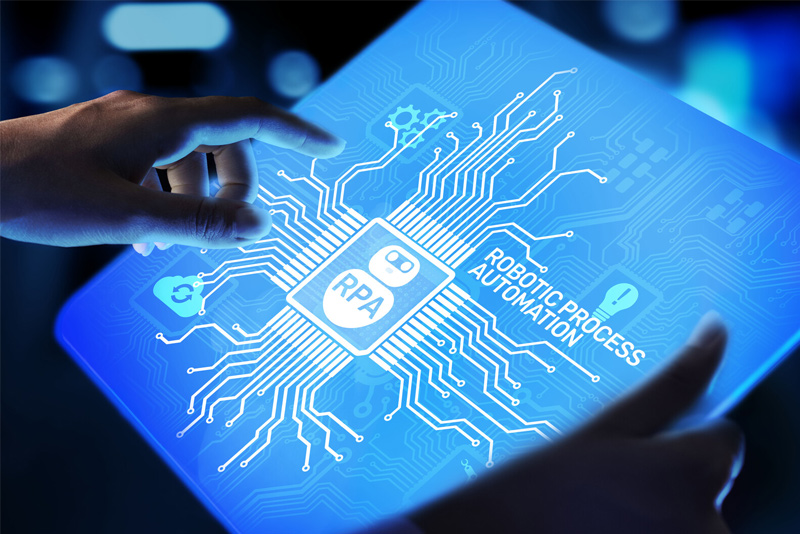With fierce competition and adoption of technology-aided processes, the higher-education environment has been witnessing a revolutionary change over the recent years. Be it holding parent-teacher meetings or creating a favorable learning environment, administrative processes at schools, colleges and universities are unnecessarily paper heavy and take away considerable time and resources. The significant changes in student demographics, flat enrollment and increased pressure to innovate on academics and student experiences, has led the higher educational institutions (HEIs) to adopt or focus on newer digital technologies. Transformation initiatives within the education industry are shifting their focus – right from products and processes to students and their individual requirements. In fact, incorporating digital technologies help reduce the cost per student and enable institutions to utilize the resulting savings for infrastructure upgrade, enhancing the learning experience or other related areas. Automation has become the buzzword for everyday tasks that improves the efficiency and productivity of the educational institutions in the long run. The rapid growth of new technological trends and automation implementation in the education sector has led many universities and colleges to look out for smarter ways to analyze large chunks of data efficiently and quickly. Utilizing data processing services to handle complex data entry tasks has become a common practice.
Higher educational institutions are leveraging the power of Robotic process automation (RPA) for a range of internal processes. RPA has the potential to change the institution’s working model by automating and developing more modern, sophisticated administrative operations while avoiding the disruptive and costly process of implementing a new core system. By helping educational institutes to seamlessly handle high-volume tasks, robotic process automation tools can bring in the much-desired efficiency in the administrative process.
What Does RPA Stand for in the Education Sector?
In simple terms, robotic process automation is a unique digital technology platform to execute tedious, heavy paper-work, or repetitive tasks – with more efficiency and low error rate. So, what kind of tasks can be automated at an educational institution? Be it administrative tasks, academic ones or finance or HR tasks, about 60 percent tasks can be efficiently done by RPA tools. With RPA technology, educators or university staffs not only have a tool that can simplify their work, but can also save considerable amount of time and resources. RPA tools can be effectively utilized in every single department of the institution like – finance, admission, teaching, and for various tasks such as student acquisition, engagement and on-boarding. The technology acts like a virtual employee that supports the faculty and staff to provide students with high-quality education.
Benefits of RPA in the Education Industry
When it comes to handling repetitive activities, RPA can be a reliable driver of efficiency. The technology will not only give teachers and administrators more time to handle multiple tasks but also reduce expenses, improve productivity and increase work quality. Furthermore, universities and schools can get things done without any hiccups even if they have a smaller number of staffs to execute monotonous activities. Here are some of the top benefits of utilizing RPA in the education industry –
- Better Customer Experience – Through the automation of back-office tasks, RPA technology can improve the customer experience significantly. With advanced automation capabilities, RPA allows educational institutions to provide higher quality services to their customers on time.
- Enhanced Management Capabilities – Centralized management servers enable higher educational institutions to remotely monitor, schedule, control and execute the deployment of RPA software robots. RPA helps achieve enhanced governance to better manage business operations as specific requirements can be embedded in automation rules. In addition, it enables auditing and analytics to happen simultaneously and access the critical reports at regular intervals for audit and analysis purposes.
- Increased Compliance – RPA technology greatly reduces data inconsistency between different sources and correctly logs all actions performed by software robots while performing automation. This in turn allows employees to proactively identify and manage compliance issues and perform internal reviews at regular intervals.
- No Coding Required for Implementation – Most RPA tools provide drag and drop technology to automate a specific process without or minimal coding.
- Cost Savings – As per research reports, implementation of RPA drives about 25% to 60% cost savings. RPA not only reduces costs but also provides value addition to the overall organizational benefits.
Intelligent Use Cases of RPA in the Education Industry
When it comes to the education industry, most of the tasks come from two specific areas – administrative and academics. Let’s discuss the specific areas or activities in an educational institution where robotic process automation technology can be implemented effectively –
- Attendance Management – RPA technology can be used to manage the attendance of students and other staff members and send daily, weekly, or monthly reports to the concerned parties. This helps schedule meetings with parents of students whose level of attendance falls below a certain percentage. In addition, staff members can access their monthly attendance report along with specific details on the number of leaves taken and other reports related to overtime benefit calculation and so on.
- Processing Grade Sheets – RPA can be used to automate the procedure of preparing student grade sheets during the examination time. Instead of the faculty members manually entering grades into each student’s report, RPA technology helps make the job easier and more efficient. The grades of each student for all the subjects can be extracted from the central database and the scores of each student can be filled on a system and later combined to build report cards. In addition, the technology allows the teachers to directly send out the report cards to the students’ parents. Furthermore, RPA that comes integrated with advanced machine learning capabilities can be used by universities to even check answers submitted by the students.
- Student Servicing – Maintaining an efficient system to manage the student servicing process is an important aspect, particularly when it comes to an educational institution. During the time of admission, examination or other events, schools and universities receive a number of queries from the side of students and parents. These queries can be related to a wide range of things like – class schedules, attendance requirements, internship, job applications, hostel room allocation, travel requests and other aspects. Automation can use Natural Language Processing and Artificial Intelligence to train robots to respond to such queries or their variations with the same level of efficiency and accuracy. Virtual assistants including chat bots, SMS bots, ring less voicemails etc. can be used to reduce the human efforts involved in answering queries. A chatbot can answer general queries from students, staff and website visitors related to the admission schedule and process, course information etc.
- Student Registration and Enrollment – Student registration and enrollment is one of the most time-intensive jobs that not only involves tons of paperwork but also requires effective management. One single missing document can create a real mess and RPA can easily replace this manual hassle process. From an initial stage of collecting student data, validating the documents, and assessing the eligibility criteria, to collecting the registration fees and sending a confirmation email to students – RPA tools can help complete the whole registration process in a flawless manner.
- Financial Reporting – As the majority of students opt for educational loans for higher studies, the administrative staff in universities or colleges have to manually check each of the forms, check the eligibility criteria and process it further – which again takes up a lot of time. RPA can also be used to automate payroll processing and fee management. With RPA, an educational institution can easily create multiple fee groups, craft scholarship applications or decide upon any optional fee (tuition fee, university fee etc.) with their respective activities.
- Scheduling Meetings – An educational institution organizes several meetings throughout the year, including parent-teacher meetings, board meetings, faculty meetings and so on. Preparing a schedule for meetings, sending out email invites and re-sending revised invites (in case the meeting is cancelled) can be a time-consuming and tedious task. RPA tools can easily automate scheduling meetings and send invites to each and every attendee. RPA bots can also be used for reminders along with any necessary attachment.
- Online Classroom Learning – With the COVID–19 pandemic having spread its wings across the planet, the majority of institutions are going for online classes or learning. However, the online learning environment today comes with a number of tasks like – attendance management, checking and grading assignments, tracking course progress – which teachers need to take care of. Robotic process automation has the power of handling both offline classroom and online learning processes in an effective manner. RFID chip (Radio-frequency identification) can be provided to each and every student in the form of identity cards to auto-mark the attendance when they enter the premises. Similarly, attendance sheets with timestamps for self-reporting can be provided for online classes.
- Staff Hiring and Payroll Management – Similar to student registration, RPA can also be used to shortlist new candidate applications and schedule them for interviews. The technology can recommend the interviewer a well-deserved pay range for the candidate (depending on his/her past experience, qualification, and industry norms). It can also be used to evaluate the attendance of existing staff members and determine their eligible payment for a given month.
Robotic process automation (RPA) adoption does not mean the end for administration jobs; rather it will reduce the human dependency for mundane tasks and focus more on value-based roles to increase productivity with reduced time. Universities and other educational institutions are increasingly identifying use cases for RPA in key administrative functions like – course scheduling, attendance management, online learning etc. where it improves the experience for students, reduces human error and creates time saving efficiencies. All these key use cases benefits can be effectively achieved if the educational institutions try to strike a smart balance between automation and human intervention. Intelligent providers of data conversion services understand that incorporating smart learning technologies helps educational businesses stay abreast with competitors.




